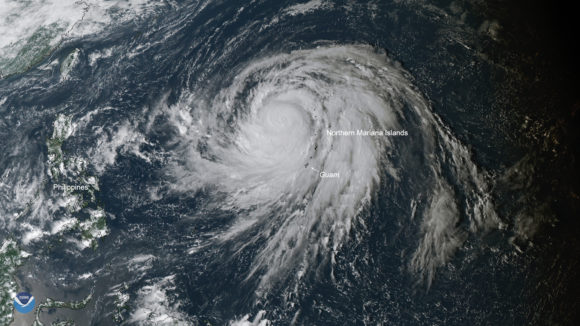Insured losses from Typhoon Hagibis, which made landfall in Japan on Oct. 12, will be between 865 billion Japanese yen (US$8 billion) and JPY 1,730 billion (US$16 billion), with more than half of the losses due to inland flooding, according to Boston-based catastrophe modeling firm AIR Worldwide.
Typhoon Hagibis made landfall with 1-minute sustained wind speeds of about 145 km/h (90 mph), the equivalent of a Category 1 hurricane, on the main Japanese island of Honshu on Saturday, Oct. 12, near Shizuoka on the Izu Peninsula, said a statement issued by AIR, which is a Verisk business.
Other details of AIR’s commentary included:
- Much of central and eastern Japan experienced severe flooding and landslides; power outages and travel disruption were widespread.
- The storm delivered high winds and record-breaking precipitation to a large portion of Honshu from Mie Prefecture in the west to Iwate in the north. Storm surge raised sea levels by more than 1 meter above mean sea level along parts of the coast.
- After the Japan Meteorological Agency (JMA) issued a Level 5, or highest level, special warning for heavy rain, unprecedented rainfall followed.
- Of approximately 540 river gauging stations on Honshu island, more than 85 exceeded their 100-year return period peak flows, with more than 100 exceeding their historical records.
- A wide swath of Honshu just outside the Tokyo metro area received between 250 mm and 500-plus mm (10 and 20+ inches) of rain.
- The resort town of Hakone, where 939.5 mm (37 inches) of precipitation was recorded, broke the calendar-day rainfall record for all of Japan. Hakone’s rainfall represents the second-heaviest 24-hour rainfall ever recorded in Japan – 25 inches (635 mm) of the 37 inches fell in just 12 hours.
- Many regions received between 30% and 40% of their yearly rainfall in just two days, with more than 100 tracking stations breaking daily rainfall records. As a result of the large swath of unprecedented rainfall in Honshu, numerous rivers—the Abukuma, Arakawa, Chikuma, Kuji, Naka, Shinano, Tone, and Watarase rivers among them—experienced severe and devastating flooding.
Because the rainfall occurred within a short time period, much of the floodwater has a high mud content and includes a large amount of debris, said AIR, noting that this could potentially increase the costs of repair and cleanup and drive up business interruption losses—especially for commercial and industrial properties.
In addition, Hagibis affected some of the same region damaged by Typhoon Faxai a few weeks earlier, said AIR. “Additional damage caused by Hagibis to properties that were damaged by Faxai but were not repaired would further complicate claims settlements,” the modeling company continued.
AIR’s modeled insured loss estimates include:
- Insured damage to property (residential, commercial, industrial, and agricultural/mutual), structures and their contents, as well as extra expenses and debris removal, and automobile from wind, storm surge, and inland flood.
AIR’s modeled insured loss estimates do not include:
- Landslide
- Losses from tornado or earthquake
- Losses to land
- Losses to infrastructure
- Losses to CAR/EAR, marine hull, or marine cargo lines of business
- Business interruption losses
- Loss adjustment expenses
- Demand surge—the increase in costs of materials, services, and labor due to increased demand following a catastrophic event; demand surge can be applied by AIR software users who want to account for this variable.
Source: AIR Worldwide (AIR)
Was this article valuable?
Here are more articles you may enjoy.



 Florida Lawmakers Ready for Another Shot at Litigation Funding Limits
Florida Lawmakers Ready for Another Shot at Litigation Funding Limits  Wildfires, Storms Fuel 2025 Insured Losses of $108 Billion: Munich Re Report
Wildfires, Storms Fuel 2025 Insured Losses of $108 Billion: Munich Re Report  Experian: AI Agents Could Overtake Human Error as Major Cause of Data Breaches
Experian: AI Agents Could Overtake Human Error as Major Cause of Data Breaches  Nearly Half of 100 Largest P/C Insurers Destroy Value: ACORD
Nearly Half of 100 Largest P/C Insurers Destroy Value: ACORD 

